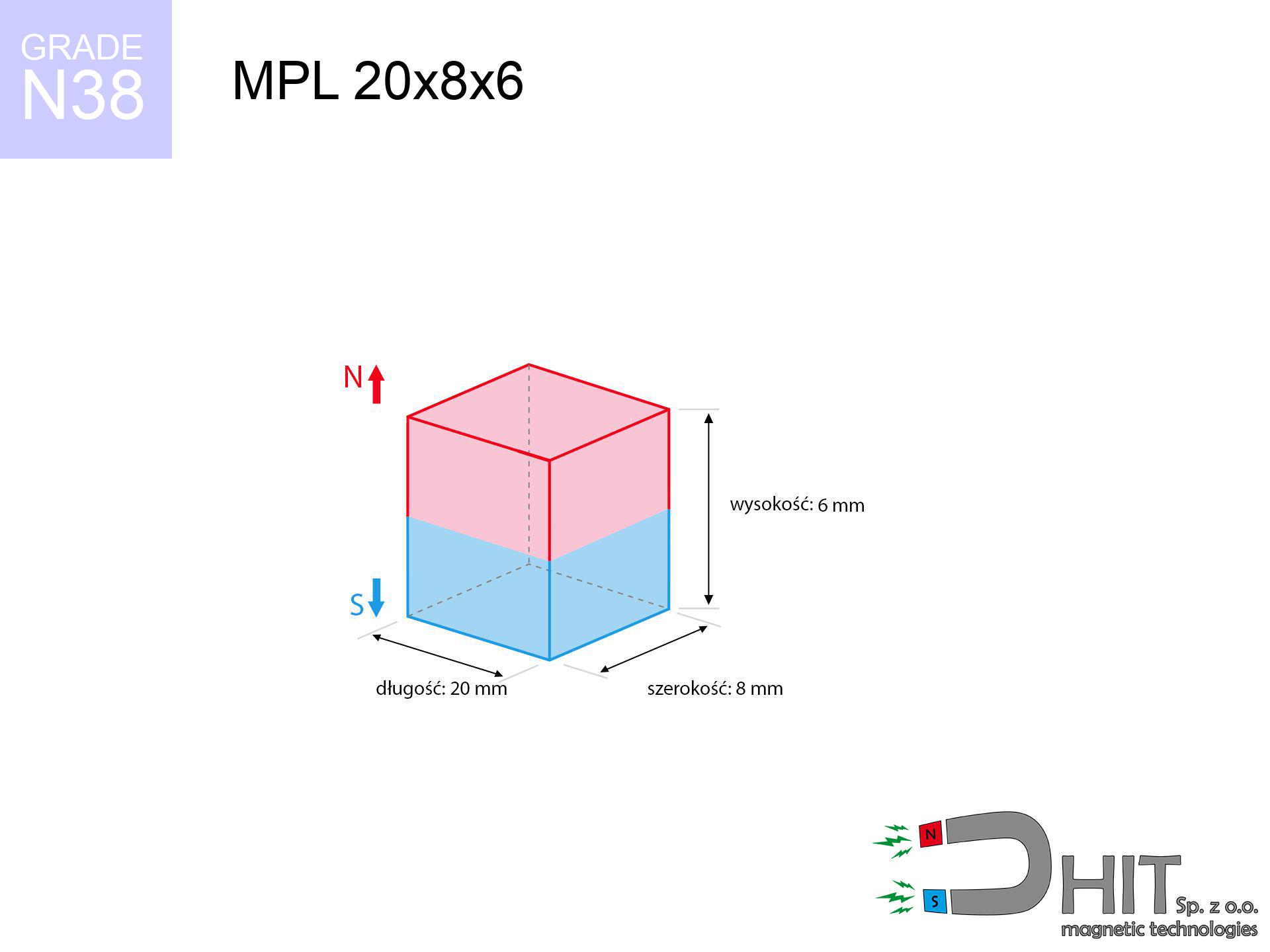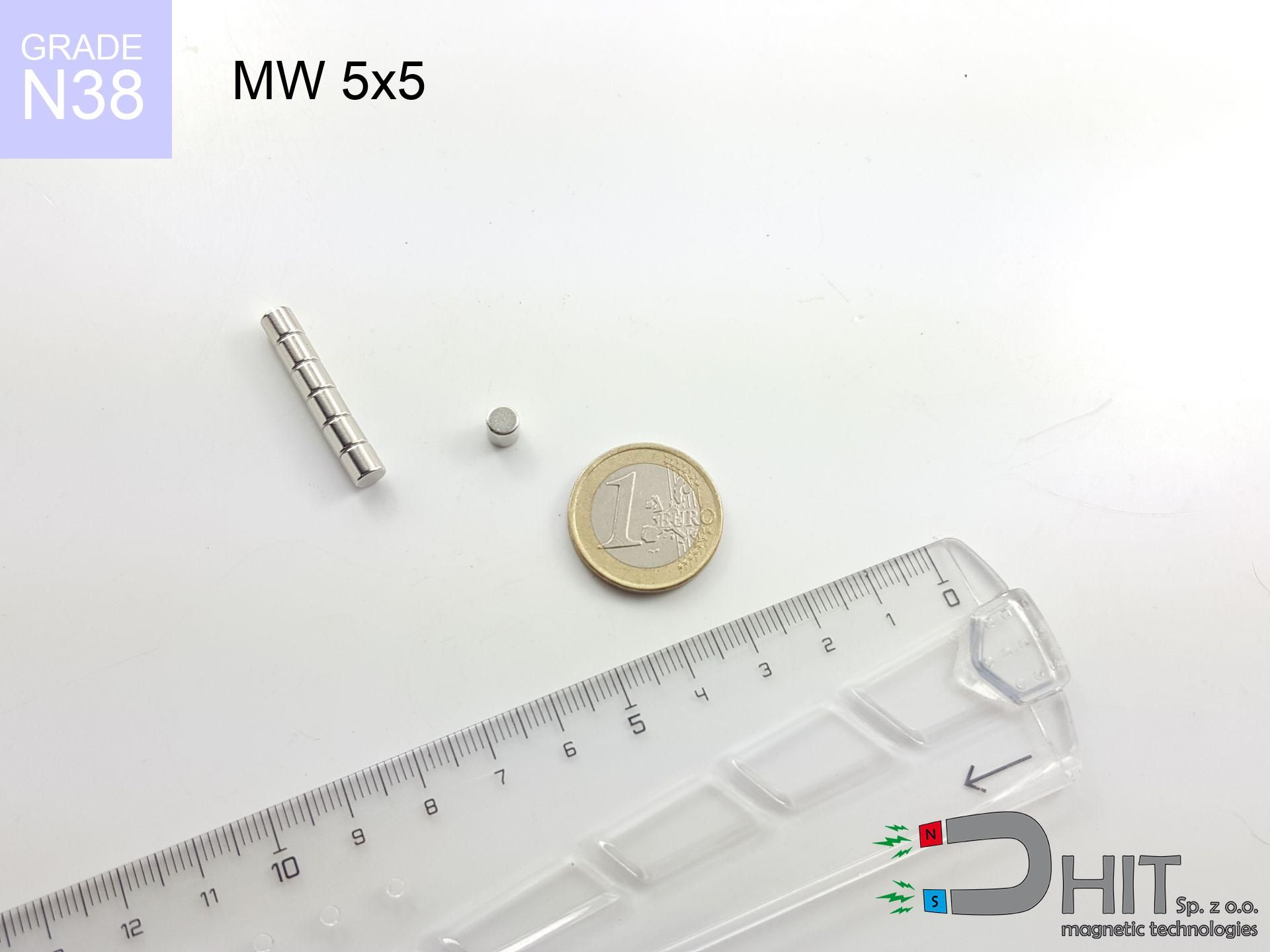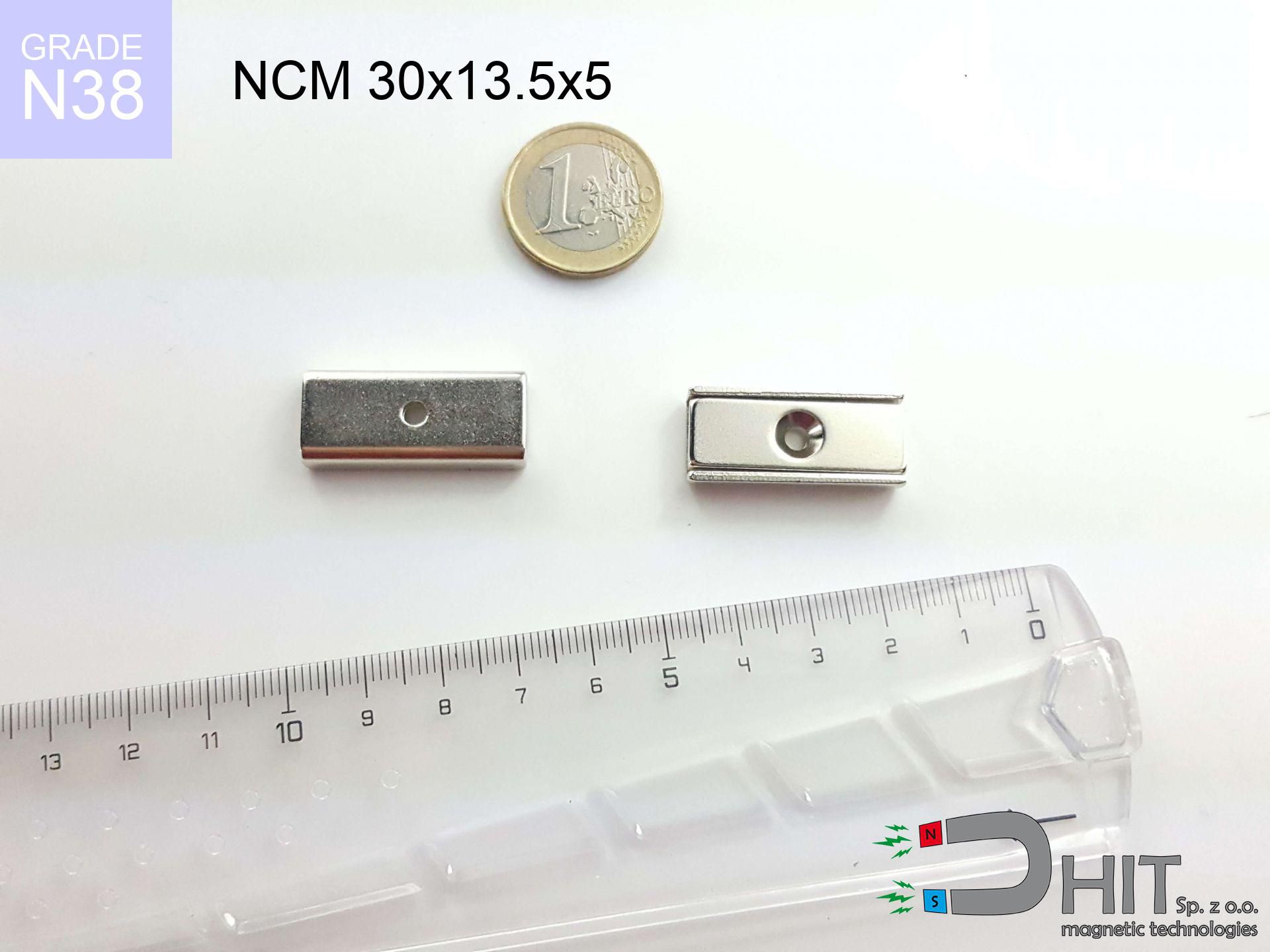MPL 20x8x6 / N38 - lamellar magnet
lamellar magnet
Catalog no 020134
GTIN: 5906301811404
length [±0,1 mm]
20 mm
Width [±0,1 mm]
8 mm
Height [±0,1 mm]
6 mm
Weight
7.2 g
Magnetization Direction
↑ axial
Load capacity
5.99 kg / 58.74 N
Magnetic Induction
423.90 mT
Coating
[NiCuNi] nickel
5.17 ZŁ with VAT / pcs + price for transport
4.20 ZŁ net + 23% VAT / pcs
bulk discounts:
Need more?Want to negotiate?
Call us now
+48 22 499 98 98
alternatively contact us using
request form
through our site.
Specifications along with structure of a magnet can be analyzed on our
magnetic mass calculator.
Orders submitted before 14:00 will be dispatched today!
Magnetic properties of material N38
Physical properties of sintered neodymium magnets Nd2Fe14B at 20°C
Shopping tips
Pros and cons of rare earth magnets.
Apart from their superior magnetism, neodymium magnets have these key benefits:
- They have constant strength, and over around 10 years their performance decreases symbolically – ~1% (according to theory),
- They are noted for resistance to demagnetization induced by external magnetic fields,
- By applying a decorative layer of silver, the element has an professional look,
- Neodymium magnets create maximum magnetic induction on a small surface, which allows for strong attraction,
- Thanks to resistance to high temperature, they are able to function (depending on the form) even at temperatures up to 230°C and higher...
- Due to the potential of flexible shaping and customization to individualized requirements, neodymium magnets can be manufactured in a wide range of forms and dimensions, which makes them more universal,
- Key role in advanced technology sectors – they serve a role in HDD drives, electric drive systems, diagnostic systems, also technologically advanced constructions.
- Relatively small size with high pulling force – neodymium magnets offer impressive pulling force in compact dimensions, which makes them useful in compact constructions
Problematic aspects of neodymium magnets: tips and applications.
- Brittleness is one of their disadvantages. Upon intense impact they can break. We recommend keeping them in a special holder, which not only protects them against impacts but also raises their durability
- Neodymium magnets lose their strength under the influence of heating. As soon as 80°C is exceeded, many of them start losing their force. Therefore, we recommend our special magnets marked [AH], which maintain stability even at temperatures up to 230°C
- Magnets exposed to a humid environment can rust. Therefore when using outdoors, we recommend using waterproof magnets made of rubber, plastic or other material protecting against moisture
- We recommend casing - magnetic holder, due to difficulties in producing nuts inside the magnet and complex forms.
- Potential hazard to health – tiny shards of magnets can be dangerous, when accidentally swallowed, which becomes key in the aspect of protecting the youngest. Additionally, tiny parts of these devices can disrupt the diagnostic process medical in case of swallowing.
- Higher cost of purchase is a significant factor to consider compared to ceramic magnets, especially in budget applications
Best holding force of the magnet in ideal parameters – what it depends on?
The force parameter is a measurement result executed under standard conditions:
- with the application of a sheet made of special test steel, guaranteeing maximum field concentration
- with a cross-section no less than 10 mm
- with an polished touching surface
- without any insulating layer between the magnet and steel
- during pulling in a direction vertical to the mounting surface
- at ambient temperature approx. 20 degrees Celsius
Practical aspects of lifting capacity – factors
Effective lifting capacity is affected by specific conditions, mainly (from most important):
- Distance (betwixt the magnet and the plate), since even a microscopic distance (e.g. 0.5 mm) leads to a decrease in lifting capacity by up to 50% (this also applies to paint, corrosion or debris).
- Force direction – remember that the magnet holds strongest perpendicularly. Under sliding down, the capacity drops drastically, often to levels of 20-30% of the maximum value.
- Metal thickness – thin material does not allow full use of the magnet. Magnetic flux penetrates through instead of generating force.
- Steel grade – ideal substrate is pure iron steel. Cast iron may attract less.
- Base smoothness – the smoother and more polished the surface, the larger the contact zone and stronger the hold. Unevenness acts like micro-gaps.
- Temperature – temperature increase results in weakening of induction. Check the thermal limit for a given model.
* Lifting capacity was assessed with the use of a smooth steel plate of optimal thickness (min. 20 mm), under vertically applied force, however under parallel forces the load capacity is reduced by as much as 75%. Moreover, even a minimal clearance {between} the magnet’s surface and the plate decreases the load capacity.
Warnings
Impact on smartphones
A strong magnetic field interferes with the operation of magnetometers in phones and GPS navigation. Keep magnets near a device to avoid damaging the sensors.
Safe operation
Before use, read the rules. Sudden snapping can destroy the magnet or hurt your hand. Think ahead.
Finger safety
Large magnets can crush fingers instantly. Under no circumstances place your hand between two strong magnets.
Risk of cracking
Watch out for shards. Magnets can explode upon violent connection, ejecting shards into the air. Wear goggles.
Cards and drives
Intense magnetic fields can erase data on payment cards, HDDs, and other magnetic media. Maintain a gap of at least 10 cm.
Nickel coating and allergies
Certain individuals have a hypersensitivity to Ni, which is the typical protective layer for neodymium magnets. Extended handling might lead to dermatitis. We suggest use protective gloves.
Mechanical processing
Mechanical processing of NdFeB material poses a fire hazard. Magnetic powder reacts violently with oxygen and is difficult to extinguish.
Danger to the youngest
Absolutely keep magnets away from children. Choking hazard is significant, and the consequences of magnets connecting inside the body are life-threatening.
Demagnetization risk
Regular neodymium magnets (grade N) lose power when the temperature goes above 80°C. Damage is permanent.
Pacemakers
Individuals with a ICD must maintain an large gap from magnets. The magnetic field can stop the functioning of the implant.
Attention!
Need more info? Read our article: Why are neodymium magnets dangerous?






![BM 380x180x70 [4x M8] - magnetic beam BM 380x180x70 [4x M8] - magnetic beam](https://cdn3.dhit.pl/graphics/products/bm-380x180x70-4x-m8-wex.jpg)


